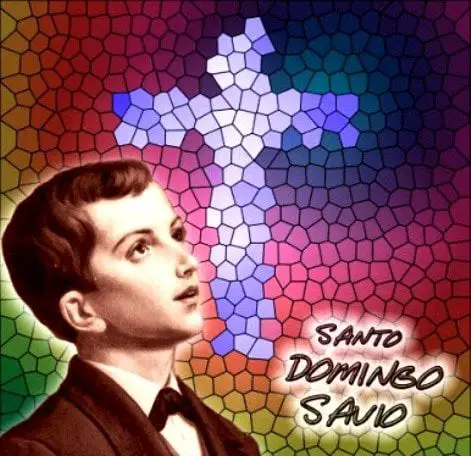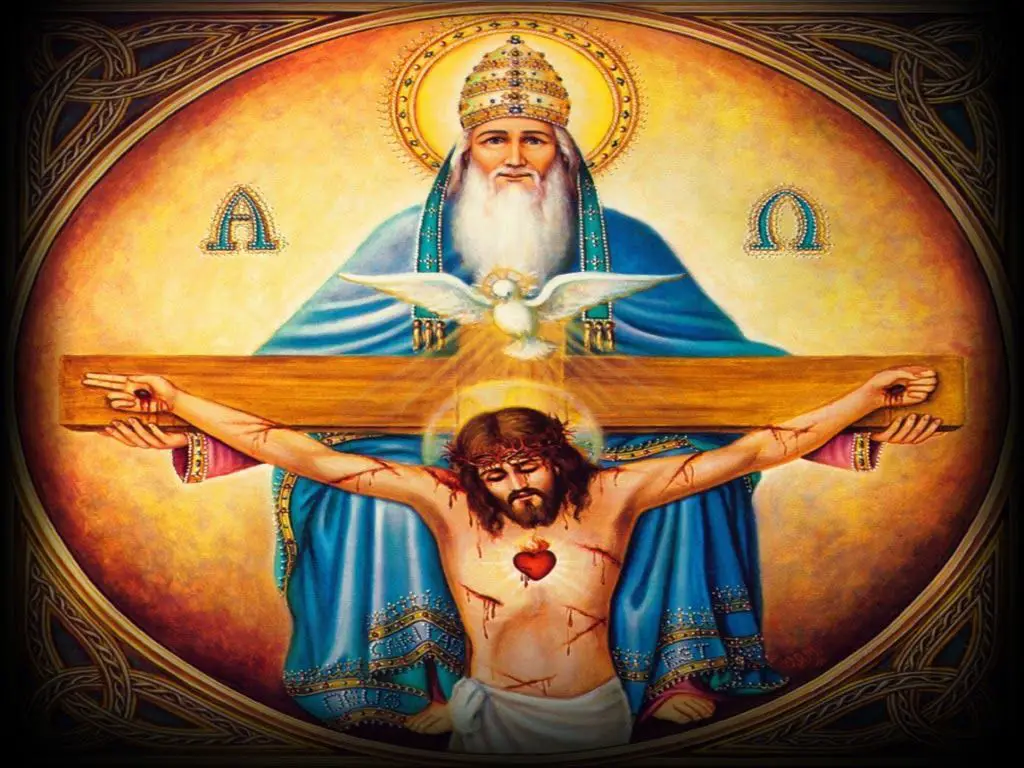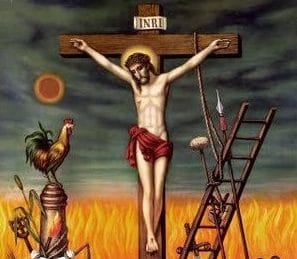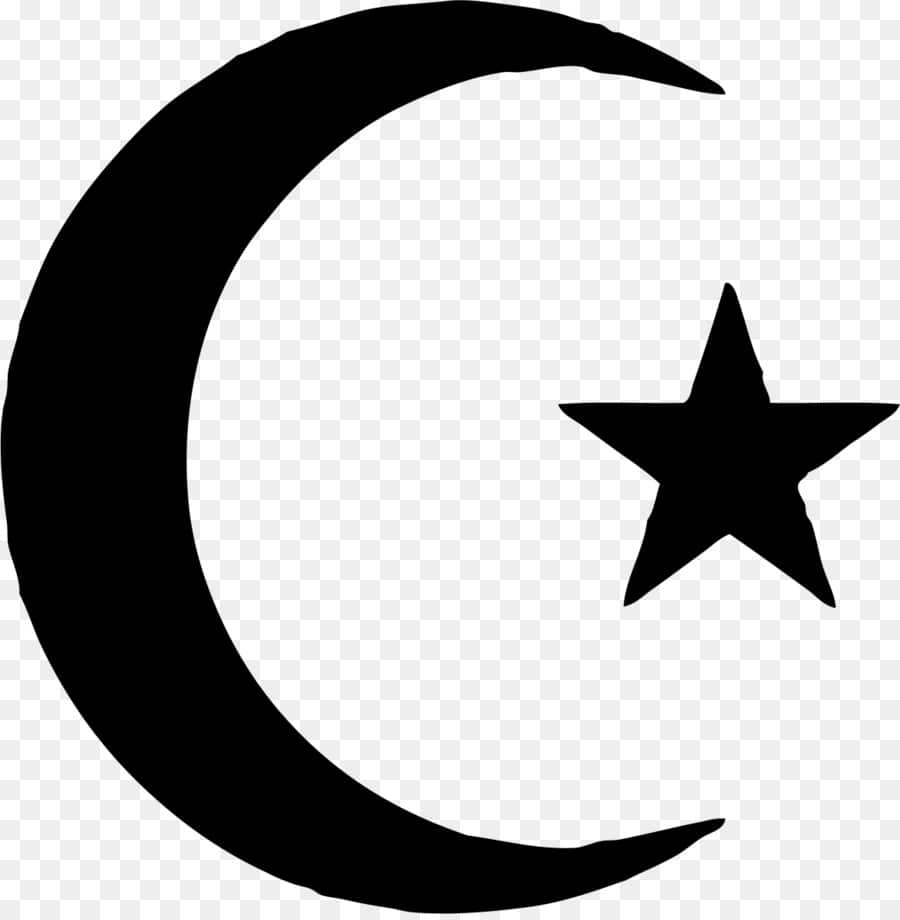Who is Orula? He is divination and wisdom in the pantheon of the Yoruba religion, he is also the witness of God OLODUMARE. Orula knows the destiny of all things and all living beings.
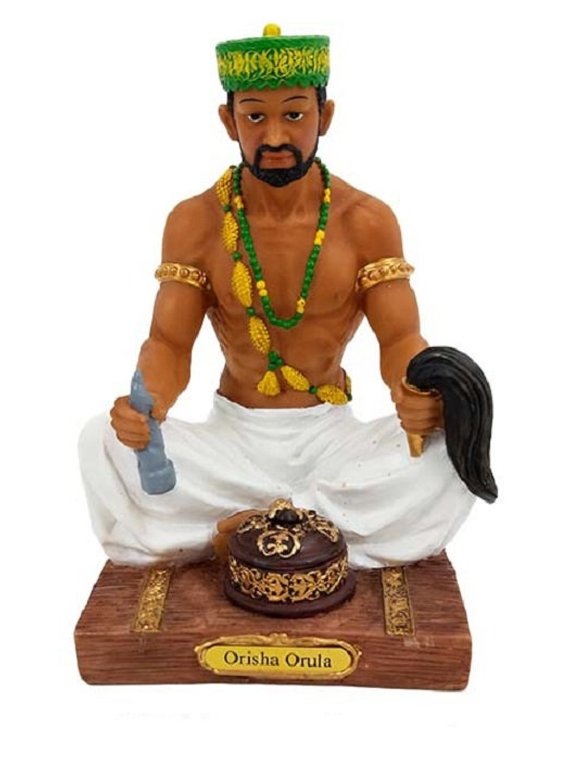
By receiving or consulting orula, people can learn their destiny in both the physical and spiritual worlds, what difficulties will threaten them and how to get rid of them, including through sacrifice.
Do you know the story of Orula, the master fortune-teller?
Orula, also known as Orúnmila, is an important Orichá (saint) and is unique in several ways. Firstly, men and women who are initiated into the Ocha or Santería do not have Orula as a guardian angel in their heads, Orula is only in the person of the Babalawos, who are only heterosexual men who have been initiated into the Ifa.
When one speaks of the Ocha, it refers to everything that concerns him (saints), the same when one speaks of the Ifa, it refers to everything that concerns him (Babalawo or high priest), they are two similar customs in Cuba, and usually work together in the same religious community, each performing specific tasks and fulfilling unique functions.
Depending on the custom of a man’s lineage, he may not need to be initiated into ocha before moving on to ifa, some men are chosen directly into ifa by divination, women may be given the cofa (or ikofa) of Orula, and any man may receive mano (abo faca) from Orula, which puts him under Orula’s care but does not fully initiate him into ifa or make him a babalawo.
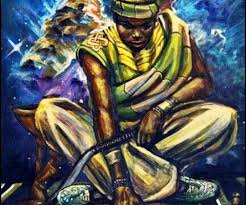
Orúnmila is the master fortune teller according to the Patakís, Orula is the only Orichá who knows the future of everyone on earth and has the power to intervene in our destiny, because when Olodumare created the universe, Orula was the only one present to observe everything.
Exactly, he knows when each person will die and he makes sure that we die at the right time, according to the destiny we have chosen for ourselves in heaven (see: article Santeria Saints).
He knows how we can find happiness, health, peace of mind and success, because he foresees when we come into the world and he knows what future awaits us, he can help us avoid mistakes by keeping us on the right path.
Orula communicates with people by making predictions with a Babalawo. Babalawos do not use dilogun (cowrie shells) like Santeros/as, but an ekuele (divination chain), ikines (kola nuts) and a wooden divination board covered with cascarilla (eggshell powder).
They may also use a piece of deer antler to mark certain odu (sacred signs) on the board, some patakis speak of Orula’s life in heaven and others speak of his life on earth, in his earthly form he is usually considered to be the brother of Eleguá, Changó and Ogún, and the son of Obatalá and Yemú (Yembó). (See: article Santería in Cuba).
When Ogún discredited himself by trying to have sex with his own mother, Obatalá was so furious that he ordered all his male children to be killed; those old enough to survive on their own, like Ogún and Eleguá, left home, but Eleguá, as always, kept an eye on things in Obatalá’s household.
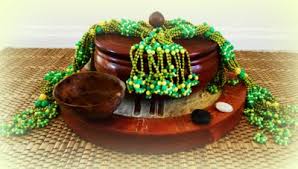
When Changó was born, Eleguá knew that Obatalá would kill him if he found out the baby was a boy, so he picked him up and ran to his older sister Dadá’s house and gave her the baby to raise.
A few minutes later, Orula was born, and Eleguá again took the baby and ran, not knowing what to do with him, so she buried him at the foot of a ceiba tree and brought him food every day so that he would not starve.
As time went by, one day Obatalá fell seriously ill, Eleguá knew that Changó had become a great healer, so he went looking for him and took him to Obatalá so that Obatalá could be cured, Changó performed a miracle and Obatalá was completely cured, Eleguá thought it would be a good time to ask Obatalá for a favour, so he asked his father to forgive Orula.
Obatalá thought it was a good idea and agreed, and to celebrate, Changó cut down a ceiba tree and carved a beautiful fortune telling board out of the wood and gave the secret of fortune telling to Orula, who became the owner of the fortune telling board and the only Orichá who could work with the Ifá oracle, and that is why Orula’s best friends are his brothers, Changó and Eleguá.
Orula appears in many patakís, in some he married Ochún, in others he married Yemayá, and one story has it that Yemayá developed her powers of divination with cowrie shells by spying on Orula from behind a door.
Who is Orula in Santeria?
A whole religious reading has been created around Orula, but what is clear is that Orula is the great protector of the people as well as the main guide, thanks to Orula one can know the future and intervene in it, Orula represents wisdom and the possibility of influencing destiny, even the most adverse, another tendency establishes that Orula is the great doctor and owner of the four winds.
It was Chango who, with the permission of Olofu, gave Orula the ATÉ and the secrets of divination, Orula is the son of Obatala and his best friends are the brothers Chango and Elegguá, his mother is Yemmu, Orula, He forms a trinity with Oddun and Oddua, in the Diloggún Orula speaks for IROS, OBBARA and METADILOGGÚN, he is concerned with all the days of the week and his feast is celebrated on the 4th of October, his colours are green and yellow.
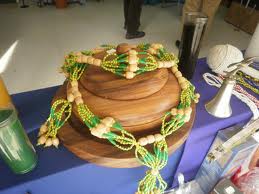
Usually you have to be a santero to become a priest of IFA, which is very common, but it is not essential, if the santero decides to move to IFA, it will be necessary to leave the cult of any Orisha and dedicate himself to Orula, the first step to become BABALAWO is the ceremony called MANO DE ORULA (ABO FACA) and only those people who have been chosen or suggested for divination can enter through this ceremony.
In the case of women, they have access through the ceremony called CO FA, and it is the highest ritual by which they can enter in relation to IFA, those thus initiated are known as APETEBI and are considered to be the wife of the deity and co-participants in some of the secrets.
The hand ceremony of Orula.
This ceremony or rite is known as Ikofafun, Ikofa or Kofa when received by a woman, and Awo Faca when received by a man, and is a ceremony to be performed only by the Babalawos, The difference is not only in the name, but the woman receives one ikin or two, depending on the odu that comes out of the tefar, The difference is not only in the name, but the woman receives one ikin or two, depending on the odu that comes out of the tefar. On the other hand, the man receives 19 ikin. Although both ceremonies are similar in their liturgy, the performance of both ceremonies may differ slightly from one religious family to another, but the fundamentals are the same. (See: St Martin Knights article:)
When a woman is given the hand of Orula (Ikofafun) this is the equivalent of marriage to Orula and is the highest consecration that can be achieved in Ifa, once consecrated the woman becomes Apetebi of Orula and can participate in certain activities within the Awofaca and Ikofafun ceremonies such as looking after the babalawos and initiates, preparing the ceremony tables or giving her ashé in the Ita, for all these tasks they receive a right, a payment.
When a person is given the hand of Orula (Awofaca), he is taking the first step on the path of Ifa, and if Orula so determines during the Ita, the beginner is authorised to go on to Ifa and become a Babalawo, if on the contrary, the opposite is true, If, on the contrary, during the Ita, Orula determines that the person does not have the path of Ifa, the recommendations of the Ita of the Awofaca rite will be the best guide to act in the face of the problems and adversities of life and can be deepened when the person crowns his guardian angel in the Yoko Osha ceremony.
This consecration ceremony is performed when the person is faced with serious situations that cannot be resolved by simple ceremonies. It implies a permanent commitment of the person to the Orisha that he/she has received, to whom he/she must attend for life with various Osha-Ifa offerings.
This ritual is based on the agreement between Iku and Orunmila, the aim of which is to keep Iku (death) away from all of Orunmila’s children. This pact and the story of Orunmila’s idefa can be found in several Ifa odus such as Ogbe Funlo and Oshe Fun, Oyekun melli and others.
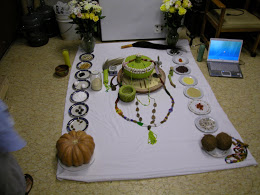
The Orula hand consecration ceremony lasts three days and the rites of the liturgy are secret and cannot be detailed, but some explanations can be given as general information.
First day of the ceremony
The first thing to do is to inform the éggun (the ancestors or the dead) of the ceremony to be performed and ask for their approval.
Then the washing is done with the first prepared umiero (herbal bath), where the foundations to be given are consecrated, while the appropriate prayers and chants are performed.
The most important part of the ceremony is the birth of the orishas, which requires the sacrifice of the appropriate feathered animals.
At the end of this first day of the ceremony, the new initiates return to their homes and must take a bath with umiero.
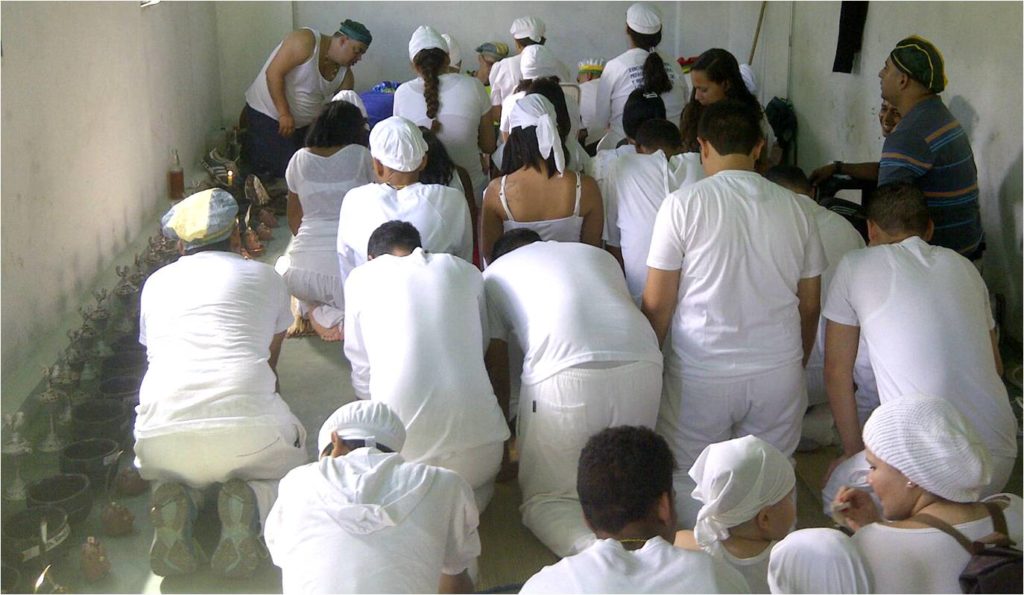
The second day of the ceremony.
This day, also known as the Middle Day, is either a day of rest or, depending on the religious house, is used to perform the head rogation of the people who will be given to Orula the next day.
Supposedly a priceless day due to the lack of religious activity, it is of great importance as Orula was born to the neophytes the day before and observes her new children.
For this reason, the new initiates must observe and respect some rules of behaviour, not to participate in fights or arguments, not to consume alcoholic beverages, not to visit the sick or attend funerals or wakes, not to have sexual relations and to live in an atmosphere of calm and serenity, it is a day of spiritual recollection.
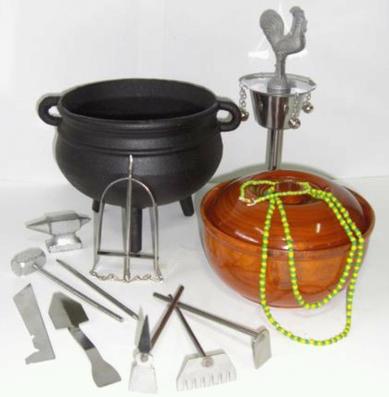
Third day of the ceremony
It begins in the early hours of the morning with the offering of coconuts to éggun and continues with the ceremony of greeting the sun, known as ñangareo, in this ceremony the Ifa Otura meyi is born in the odu, those present take a sip of saraeko, a concoction based on corn, brandy and other ingredients, and ask for the blessing of the elders of both religion and blood, as well as that of the orishas and especially that of Olorun.
The breakfast table is then used for an exchange of ideas between the babalawos and the new initiates (see article on San Juan Bautista in Venezuela).
Once breakfast is over, the babalawos who perform the ritual inform the orishas and orunmila that the ita will take place and proceed to make a prediction with the ikines of orula, which is called atefar, During the reading of each ita, a prediction is made with the advice derived from the different odus that came out when Orula was atefar, only one initiate can be in the room and it begins in order of religious majority or age.
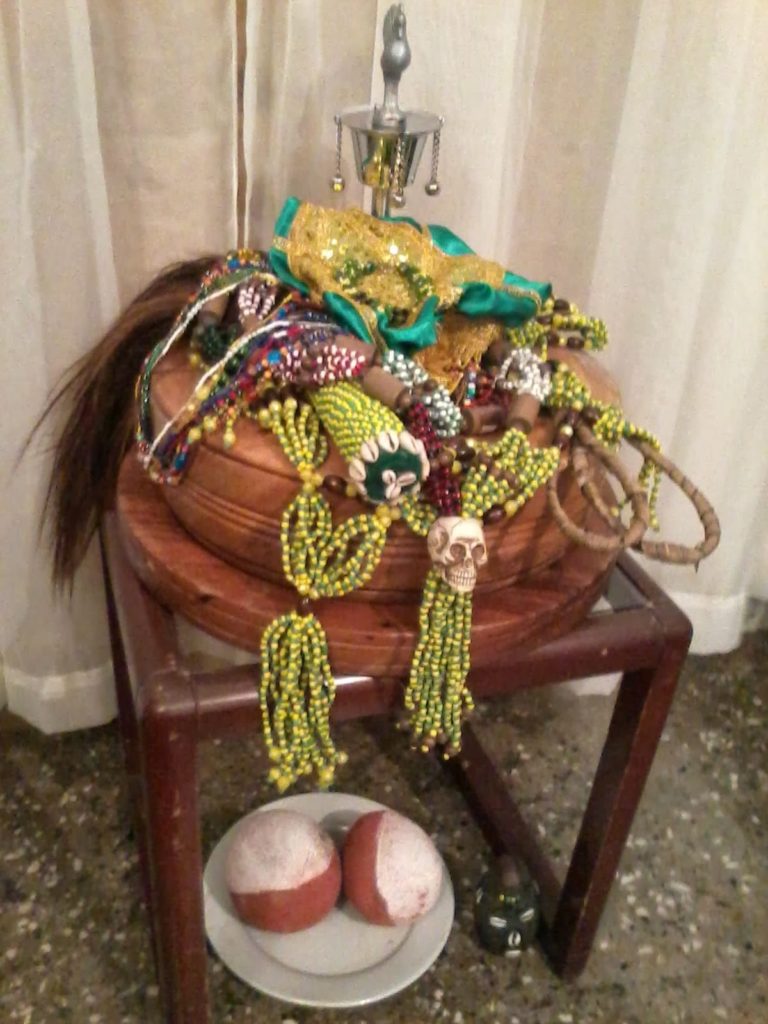
From that moment on, the person’s name in the religion will be the Odu or Ifa sign that came out in the Ikofafun or Awofaca ceremony, then the Babalawos proceed to determine the person’s guardian angel or guardian orisha by the same procedure. At the end of each Ifa per person, they proceed to perform a purification or (ebbo) on the Ifa tablet.
The final phase of the ceremony is the delivery of the consecrated foundations (orula only or orula and warriors, depending on the individual), the implantation of the idde and the orula necklace of green and yellow beads that distinguishes the people who have performed this rite and indicates to Iku that he should not carry them before the time.
They will be given instructions on how to follow the basics they have received and the second godfather or oyugbona de mano de Orula will be chosen from among the various babalawos (at least three must be present) who performed the ritual. The godfather of Orula’s hand must be the babalawo who performed the ritual.
Who is Orula in the Yuruba religion?
He is Orula or Orunmilla is the Orisha and belongs to the divination, according to the great protector of mankind and is one of the main advisors. Orula is the one who foretells the future through the secret of Ifa, he is also a healer, those who ignore him can suffer the changes caused by Eshu.
Orula symbolises intelligence, mischief, wisdom and the cunning that overcomes evil. When Olodumare created the universe, Orula was there to witness it; in fact, he knows the fate of all that exists. He is known as eleri-ipin ibikeji Olodumare (he is the godfather of all creation and the second in command of Olodumare).
“Orula eleri-ipin
Iré keji Olodumare Onatumo agbedebeyo
Alapa siyan iwi Oduduwa
Aché ishe miní, Orula somo somo
Orula Iboru, Orula Iboyá, Orula Ibosheshé”.
He is the first prophet of the Yorúbá religion, sent by Olodumare to watch over the births, deaths and growth of individuals and other species, owner and diviner of oracles because of his greatness, he also interprets Ifá.
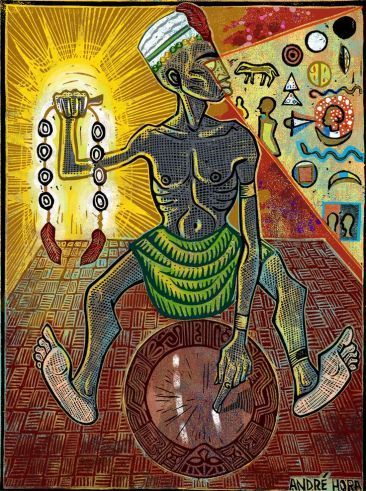
Between 2000 and 4000 BC, he lived on earth as a prophet with 16 celestial ancestors (the Meyi of Ifá), his liturgy comes from llélfé and his name comes from the Yorúbá Órúnmílá (Heaven only knows those who will be saved).
He symbolises wisdom and the likelihood of responding to fate, even the most unfavourable; those who heed Orula’s advice, be they human or Orishas, may fall victim to the Osogbos sent by Eshu. He is inseparable from Shango, who gives him the permission of Olofin, the gift of divination, and Eshu, his faithful ally.
The orula forms an important trinity with Oddúa (oduduwa) Olofin; only those chosen by him can enter his cult through the “hand of the orula” (awo fa ka), for men e lko fá fun, and for women, who are considered the wives of the orula, are called de apetebí; this is the most important consecration a woman receives in the cult of the orula. Men, on the other hand, can become priests if the orula decides or appoints them, in which case they are called babalawo.
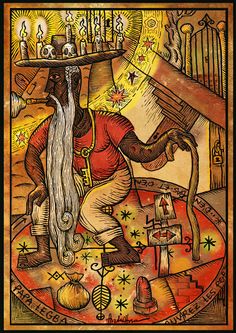
Orula has the knowledge of the secret things of humanity and nature, as well as the accumulated knowledge of human history. On the human plane he represents the spiritualities of all the deceased Awó ni Orula. He is the ruling Orisha and interpreter of the Odun of the Ifa Oracle.
He does not sit on his head and communicates only through his oracle. He has the power to know the beginning and origin of all things, including the Oshas and Orishas, and allows the individual to know and influence their future. He is closely associated with Eshu and Osun.
The priests may be the best organisers and the most mystical and wise; Eshu is the helper; the clergyman of the Orisha Orula exists in the same concept as the clergyman of other Oshas and Orishas, the difference being that it is only for men and for individuals who do not fall into trances.
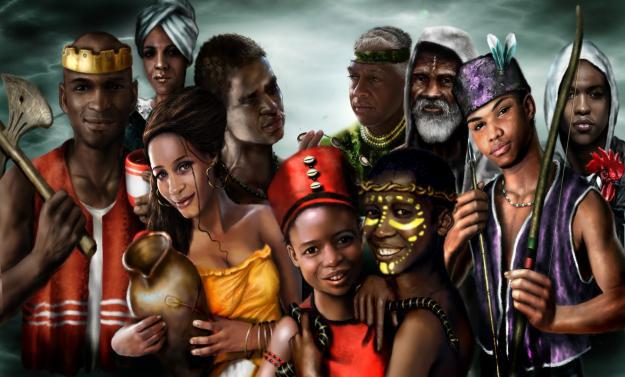
Women may come to the consecration of iko fa fún; ni orula and have the idea of being heard with more opportunities than men; women who belong to apetebí ayafá are the original owners of the base of the ifá of the clergyman they attend. Their clerics are not allowed to ride horses or throw snails.
The colours of the Orula are green and yellow; in syncretism he has been compared to Saint Francis of Assisi (whose feast day is 4 October) and is greeted as Orula Iboru, Orula Iboyá, Orula Ibosheshe!
Palo Mayombe.
Mayombe is a Congolese word that means magistrate, supreme chief, governor, denomination or title of honour; let’s call the magician of the Conga tradition the mayombero, officiant of the rule known as palo monte, which worships the deceased and the spirits of the essence (nature).
In short, mayombe is the intimate relationship with the spirits of the dead who, together with the animals, the waters, the minerals, the land, the palos and the herbs, make up the universe worshipped by the Cuban descendants of the men and women brought from the kingdom of Manicongo.
This practice is based on the interaction with the spirits of the ancestors and the deceased and with the vibrations of all that is in the essence (nature); it is usually known by its followers as mayomberos, nganga fathers, ganguleros, paleros, yayas, etc., until it is given the derogatory name of brujo (witch).
History of the Palo Mayombe.
The Palo Congo has its history in the Congo Basin in Africa, the point from which the greatest number of slaves were sent to Cuba; consequently, a great majority of the liturgical invocations of the Palo Congo are expressed in a mixture of Spanish and Kikongo, which was introduced through its representations in various nations of Spanish-speaking America.
In the mid-20th century, Palo Congo began to spread to the borders of Cuban communities, Venezuela, the United States, Colombia and Puerto Rico, and coincidentally a number of non-Afro-Latin and Anglo-American groups have adopted these traditions.
This religion has remained completely Cuban in character and is therefore practised in a very traditional way.
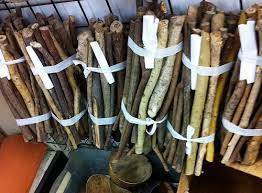
The followers of Palo Congo in Cuba are not very well known and it is believed that a very small percentage of Cubans, especially in the areas of Havana, Matanzas and the eastern parts of the island, believe in its ideals. There is an ethnic group of followers who are mostly of black and mulatto races, although there are a large number of white individuals who follow this religion.
Who is Orula in Palo Mayombe?
Commonly known as Palo Mayombe (Palo Monte), it is one of the African beliefs that came to the Americas through African slaves. It is related to Santeria and is a blend of African shamanistic elements with spiritualism, Catholicism and magic.
Its roots are in the African Congo, unlike Santeria which was syncretised with Catholicism to hide the truth of the beliefs and to protect itself from religious persecution. The rules of Palo Monte were syncretised in Kimbisa in Africa, which was introduced to Christianity by Spanish excursionists in the Congo.
Some Palo houses tend to mix the two beliefs and include Orula in the initiation rite, so that the beginner receives the Mano de Orula from a Babalawo and at the same time Orunmila tells him who his guardian angel is and in which nganga he should be scratched.
It is worth mentioning that Palo Mayombe or Palo Monte is a religion and Osha-Ifá is another cult, so some believers do not like to mix the two rituals. That is to say, as mentioned before, whoever practises Palo can also practise Santería, each in its own place, it is not recommended to mix the two cults.
Palo and Santería.
Palo is a religion that worships ancestors and spiritual beings in general. Its name means trees, referring to the magical and sacred trees where spirits dwell. This cult is found in all parts of the world, but mainly in Cuba, Brazil, Venezuela and the United States. Palo is inextricably intertwined with Santeria, so followers of the Regla de Osha-Ifá can practise Palo without any difficulty. The main branches of Palo are Briullmba, Mayombe, Kimbisa and Santo Cristo del Buen Viaje.
Initiated priests are called Paleros, who are trained in the arts of magic and divination. Depending on their gender, they are called Tata (Papa) or Yaya (Mama). The transformation into a Nguey or Nkisi son is done through an initiation where the spirits are consulted beforehand to see if the new beginner or initiate will be accepted.
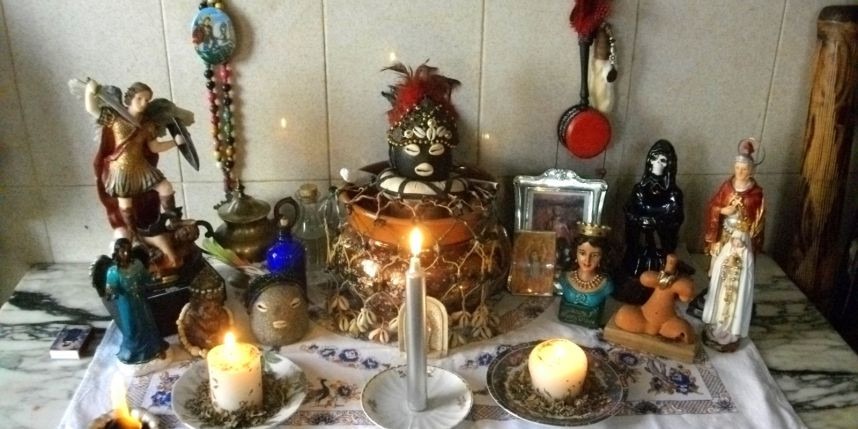
If the answer is yes, they go through a ceremony called Nkimba (scratching). Further training of the Nguey Nkisi by their Tata or Yaya Nkisi is required to reach the level of Tata or Yaya and to have a Nganga or Eggun foundation.
The scratching.
The Nkimba ceremony or “Rayamiento” is the initiation ceremony by which a person becomes part of the Palo Mayombe cult.
But not everyone has to be initiated into this cult, as initiation depends on the approval of the Nganga. The interested person must first go to a Tata (priest of Palo Monte), who will consult the person and their spirituality (their astral), from which the Nganga will determine whether or not they should be scratched.

